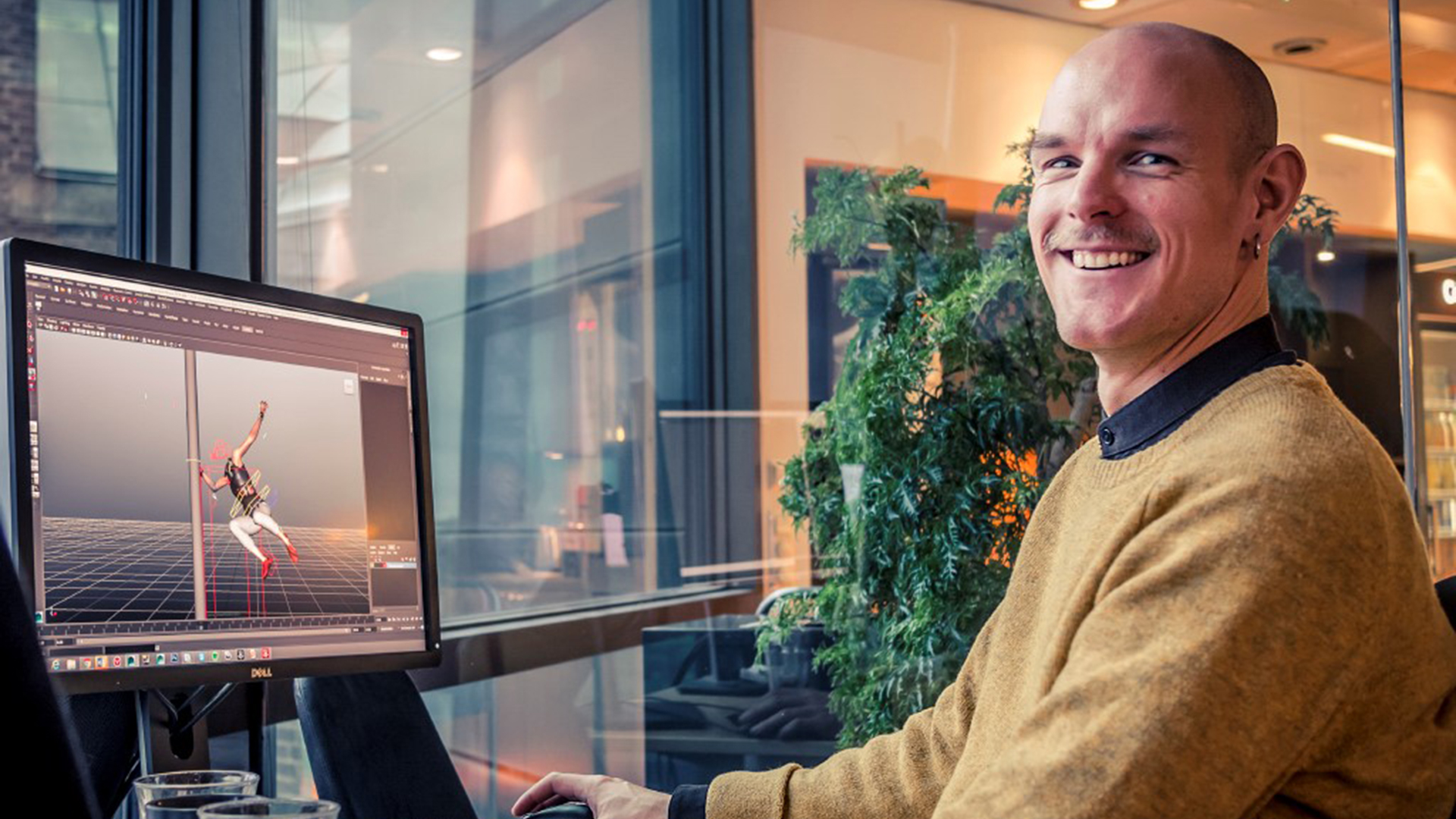The makers of Mirror’s Edge Catalyst: Part Four
The Mirror's Edge Catalyst Character Animator talks about creating run cycles and fighting motion sickness

Not only does Character Animator Emil Nilsson ensure that Faith’s movement looks as attractive, fluid, and natural as possible. He makes sure you won’t get motion sick while playing.
Welcome to a new installment of The Makers of Mirror’s Edge™ Catalyst. Let’s jump right in and shoot Emil some questions.
What are typical duties for a character animator?
I handle animation tasks of all kinds. These can be anything from fixing traversal bugs to larger tasks like creating a run cycle, which is an animation loop for Faith that our animation system then uses to portray movement in many different speeds and directions.
We’ve done a lot of motion capture for Mirror’s Edge Catalyst, so I also spend a lot of time adapting those recordings. The natural movement we get from mo-cap is actually too slow to use directly in a game, so we need to alter it by only using key parts of the motion. If we were to animate a completely realistic jump we’d have to include movements like a slight crouch leading up to the jump, something that would feel very slow for the player.
Animating Mirror’s Edge Catalyst is also about minute tweaking of different systems. If we feel that climbing doesn’t feel snappy enough, our programmers can adjust the system, I can tweak the animations, and together we make the experience more fluid.
What are the biggest challenges for working on animation in Mirror’s Edge Catalyst?
For first person animation, one big challenge for a game like Mirror’s Edge Catalyst is motion sickness. We constantly fine-tune the camera to make sure that the player can run, jump, and roll without getting motion sick - but still feel fast and agile. Finding the perfect middle ground is crucial. The camera needs to shake in some places, but be steady in other.
Although Mirror’s Edge Catalyst is played in first person, there are animations needed for third person as well. The biggest challenge there is probably to make everything flow together in a nice way. Since players are free to move around as they choose there are a ton of potential visual scenarios, and we need to make all those transitions look as good as possible.
How has the team approached combat animation?
Combat is something the team is tweaking and iterating a lot on, and since Mirror’s Edge Catalyst is such a unique game we need to approach combat in a unique way. The game world is vast, and that allows for non-scripted combat encounters. Together with the third person takedowns, this requires a really sturdy combat system with great animations – something I believe we really are nailing.
How similar are the Faith animations to what you see in parkour videos?
You’ll definitely recognize some running and climbing techniques, but if you look at a parkour video you’ll notice that the head-mounted camera moves quite a lot. But since your eyes naturally stabilize to counteract the head bobbing you don’t really experience that much shaking when running around in real life – or in Mirror’s Edge Catalyst.
What do you enjoy most with working on the animation of Mirror’s Edge Catalyst?
It’s great to work with such a dedicated team and to have a lot of freedom within my tasks. The freedom of traversing the city of Glass is such a big part of Mirror’s Edge Catalyst, and I really enjoy working towards that. I get to create animations to make the game feel fluid, and it feels good to see it improve constantly. One key goal with Mirror’s Edge Catalyst is to create a game with great fluidity in movement - and being a part of realizing that is exciting!
Do you want to learn more about how DICE is creating Mirror’s Edge Catalyst? Hit the links below and get to know our developers.
The Makers of Mirror’s Edge Catalyst – Creating the Gameplay
The Makers of Mirror’s Edge Catalyst – Writing Faith’s Story
The Makers of Mirror’s Edge Catalyst – Designing the City of Glass
